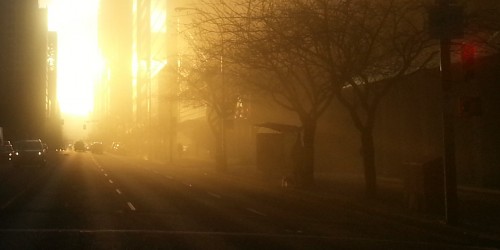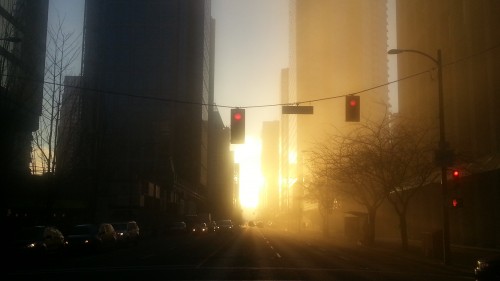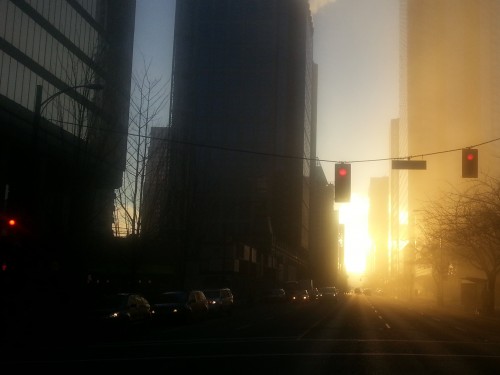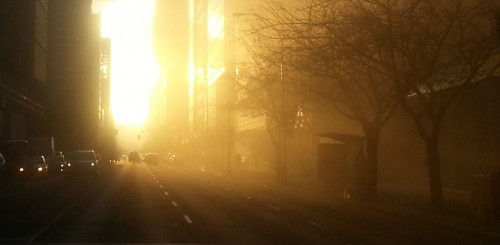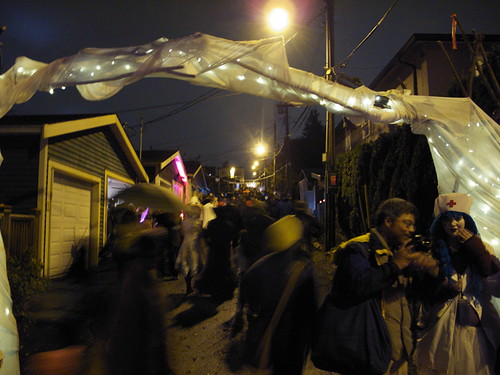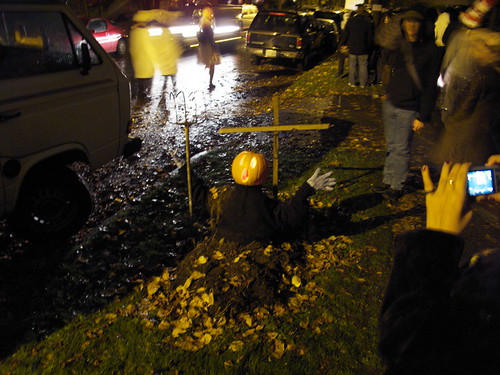Northern Voice, the blogging and social media conference which I’ve been attending for two years running, happened again. This time in June instead of May, and at SFU Woodward’s instead of UBC. It’s a great venue, and suited me better, commute-wise.
I had an amazing time again this year, and of course I’m going to recap the hell out of it. Some of the talks complemented each other nicely, so I’ve decided to cover them together. Let’s start with the two morning keynotes:
Reilly Yeo of Open Media kicked the conference off on Friday with her keynote Using the Internet to Save the Internet. From Slacktivism to Interactivism. Open Media has led a number of campaigns, including Stopthemeter.ca, fighting the push by telecom companies to implement metered net use. That petition got over 500,000 signatures, made national news, and the decision-makers responded. More recently, their campaign to stop Bill C-30, the online spying bill made more national news, exposed yet again the raving paranoia of the Harper government in general and Safety Minister Vic Toews in particular. Again, the government blinked.
The moral of these stories? Online petitions do work! Online activism can make a difference! The term “slacktivism” is easy to throw around; and signing online petitions is just about the least you can do to call yourself an activist, but there’s a lot more going on than that. First, half a million “slacktivists” can’t be dismissed so easily.
Second, don’t knock petitions. Darren Barefoot said so way back in Northern Voice 2010: there are many ways to do good online, simple and complex, and it’s important to have a low barrier of entry to do-gooding.
Third, they (well, some, at least) are not just putting in a token ten seconds of effort, they’re getting informed, getting connected with like-minded people, and coming up with hilarious memes. The decision-making process is suddenly a little more human, a little closer to home. Netizens move away from passive consumption of lolcats and Justin Bieber, and towards responsible, mindful involvement.
Not that there’s anything wrong with lolcats, of course. Lolcats are awesome. But lols mixed with politics? Well, that’s best of all.
Second moral, BTW: the Harper government, for all its majority, isn’t quite the juggernaut it would like to be.
So maybe, Yeo argues, “slacktivism” isn’t the right term after all. She suggests “interactivism”: a new kind of activism, highly connected and savvy, with massive potential, and open to anyone.
But what is interactivism saving the internet for, though? Let’s ask Blaine Cook. In his Saturday keynote, The Wild Future (not to be confused with The Future is Wild, which I have on DVD and is totally awesome), Cook argues for the preservation of a “wild” internet, a net free to evolve organically, where difference is a good thing, multiple cultures can arise, coexist and enrich each other.
Let’s talk about Babel for a moment. Cook introduced it as a metaphor for the frustration we feel that we can’t accomplish the things we want, because we can’t work on things together. That’s one interpretation I’ve never heard before! And it’s true, we get more done when we work together. But when we work as one, we get the same things done, over and over. We put up the same towers, over and over. But one size does not fit all.
Case in point: UBC’s Buchanan Building is a fine example of Brutalist architecture, apparently modeled on a building in San Diego. The windows in that building relied on being set deep enough that direct sunlight wasn’t a problem. Problem is, they transplanted the exact same design 2,000 km north, where the sun is much lower in the sky, and apparently the building is an oven.
Brutalism’s been around for a long time. Many cities have a few examples, as office buildings or low-income housing, like the UK housing estates. Some worked, some became slums and got torn down. The lesson is: attempting to design urban utopias with a single, narrow vision leads to monocultures. “Machines for living in” don’t inspire community or organic cultural growth.
Seguing into the online world, Blaine drew a parallel between, on one hand, Brutalist architecture and on the other, the iPhone and social networks like Facebook. The iPhone, you say? (or at least, I said) This pretty, pretty thing with all the wonderful software, how is it anything like those giant ugly-ass buildings? Well, it’s controlled from the top down by a single corporation, and has built-in pesticides to limit the diversity of its software ecosystem. By contrast, the Android system is a much wilder place. Facebook likewise is pretty bland, omnipresent, and controlled by a corporation who calls the shots on your privacy.
Mind you, Facebook did have Cow Clicker, so it wasn’t all bad.
And let’s face it, sometimes you want the bland and the safe. It’s a push-and-pull thing, I guess. Humans settle, we make the wild places not-wild. For comfort, for support, for community. That’s not a bad thing. Not everybody can be a pioneer. But we need to be able to fork cultures, we need the space to create new spaces and ways to express ourselves, and this is something the Web enables like nothing else. As long as it’s not bled dry by big telecoms, strangled or spied on by a paranoid government, censored by churches, or turned into bland consumer networks by greedy corporations.
That is our wild future. The future of collaborative writing using Git, of open source software like Drupal, Firefox and Linux, of a hundred phone OS’s and Pinterest clones, of freely shared knowledge thanks to Wikipedia and others.
The world is so malleable, and we get to find the answers together by building them.

